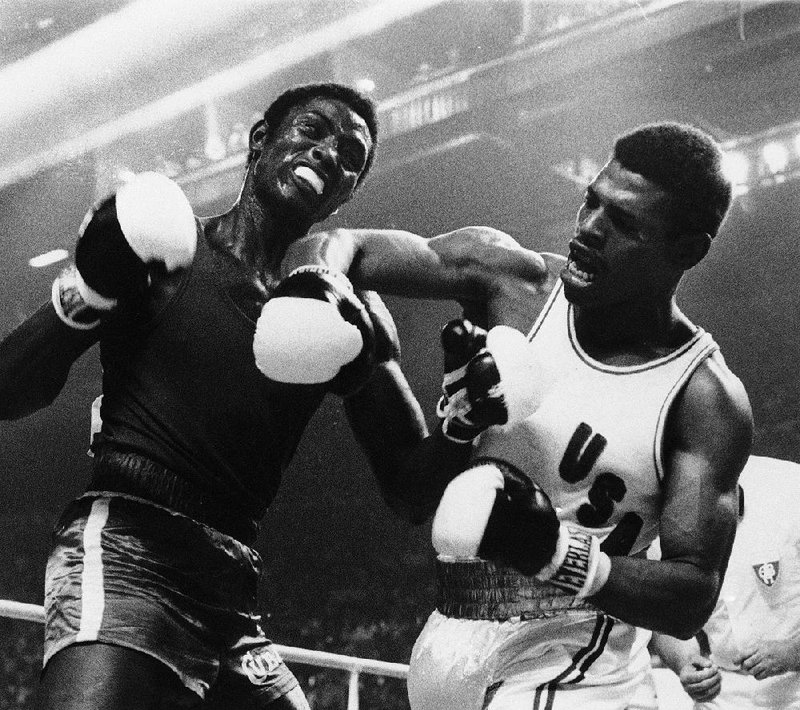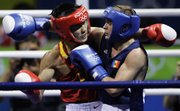COLORADO SPRINGS, Colo. -- Although Antonio Vargas still thinks about the cut that nearly ended his Olympic dream, his unprotected head will be clear when he steps into the ring in Rio de Janeiro.
Vargas grew up sparring and competing in protective headgear, so he had never been cut in a fight before his face split open in that bloody loss at the U.S. Olympic team trials seven months ago. The gifted flyweight from Florida had to fight his way back through the challengers' bracket, surviving to earn a spot on the team.
Cuts haven't been a major concern in Olympic boxing since 1980, but they will be a constant danger in Rio, where the 250 male fighters will box without headgear for the first time since Moscow.
Fighters have had three years to adjust to the change.
"I'm always going to do what I have to do," Vargas said. "I don't think it's really changed my style. I'll still have the same style going into the Olympics. I just have to be careful."
The International Boxing Association made a highly visible alteration to its sport when it removed the headgear ahead of the 2013 world championships. Many fighters are excited for fans to see a sport that looks more like the pros, but the move is still criticized by other fighters and coaches who believe safety has been made secondary to appearance -- particularly because of the high potential for cuts in a short, multifight tournament.
"I don't think it was a good idea, taking off the headgear, because we're still amateur," U.S. light flyweight Nico Hernandez said. "I got cut on both eyes before. I got stitches and stuff from headbutts. I just don't think it's as safe for the amateur boxers. But I also like it, because you can have more peripheral vision and you don't get as hot. I've had a lot of fights without now, so I'm used to it."
The bulky protective pads were placed on Olympic fighters' heads in 1984 because organizers wanted to improve safety, and they've been pulled off the fighters heading to Rio for ostensibly the same reason.
In its lengthy quest to become a professional boxing promoter with control over the Olympics, the International Boxing Association went to great lengths to establish a scientific backing for its decision to drop headgear. The International Olympic Committee also cited research to support the notion that the bulky head guards reduced the number of knockouts and stoppages, thereby reducing concussions.
The conclusions have been disputed by other scientists and fighters alike, but the benefits of removing headgear go beyond any concussion data in an inherently dangerous sport: Quite simply, the removal of headgear allows television audiences to see the fighters' faces.
Billy Walsh competed in headgear for his native Ireland at the 1988 Seoul Olympics before becoming one of the amateur sport's foremost teachers. The new U.S. coach has adjusted his instructions under the new rules.
"Without the headgear, we've now got to be a bit more mobile, a bit more flexible, a bit more careful of heads," Walsh said. "We've got to be a bit more elusive. With headgear, we just locked up. We've had to adapt some skills and techniques, but we've adapted similar stuff we would have been teaching when they had headgear. We all have to adapt."
AIBA's changes are expected to continue after Rio, too. Women's boxing kept the headgear for its second Olympic tournament because AIBA said it doesn't have enough concussion data on women, but most female fighters expect AIBA to remove their headgear next year. The male boxers are still wearing tank tops in the ring in another holdover from the sport's amateur days, but those are likely to be removed soon as well.
Even fighters who don't agree with the science of the decision credit AIBA for attempting to improve their sport's marketability, and the governing body has conducted a lengthy campaign to persuade boxers to fight without the in-close, headbutting style that could ruin the tournament.
Most of the American fighters also plan to turn pro shortly after the Olympics, so the absence of headgear gives them a head start on the process.
Sports on 07/27/2016

